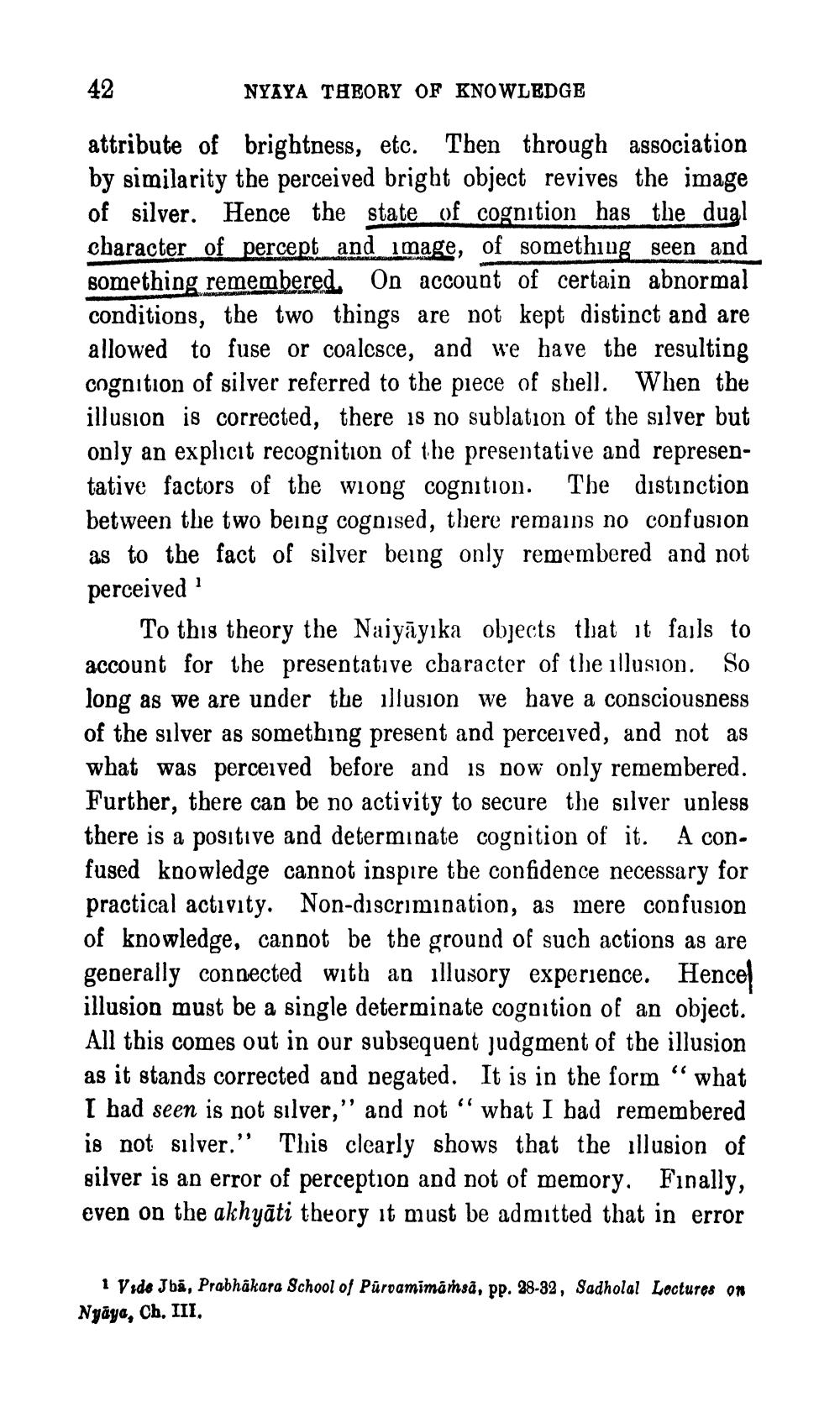________________
42
NYAYA THEORY OF KNOWLEDGE
attribute of brightness, etc. Then through association by similarity the perceived bright object revives the image of silver. Hence the state of cognition has the dual character of percept and image, of something seen and something remembered. On account of certain abnormal conditions, the two things are not kept distinct and are allowed to fuse or coalesce, and we have the resulting cognition of silver referred to the piece of shell. When the illusion is corrected, there is no sublation of the silver but only an explicit recognition of the presentative and representative factors of the wrong cognition. The distinction between the two being cognised, there remains no confusion as to the fact of silver being only remembered and not perceived 1
1
To this theory the Naiyāyıka objects that it fails to account for the presentative character of the illusion. So long as we are under the illusion we have a consciousness of the silver as something present and perceived, and not as what was perceived before and is now only remembered. Further, there can be no activity to secure the silver unless there is a positive and determinate cognition of it. A confused knowledge cannot inspire the confidence necessary for practical activity. Non-discrimination, as mere confusion of knowledge, cannot be the ground of such actions as are generally connected with an illusory experience. Hence illusion must be a single determinate cognition of an object. All this comes out in our subsequent judgment of the illusion as it stands corrected and negated. It is in the form " what I had seen is not silver," and not what I had remembered is not silver." This clearly shows that the illusion of silver is an error of perception and not of memory. Finally, even on the akhyāti theory it must be admitted that in error
((
1 Vide Jba, Prabhakara School of Purvamīmāmsã, pp. 28-32, Sadholal Lectures on Nyaya, Ch. III,




